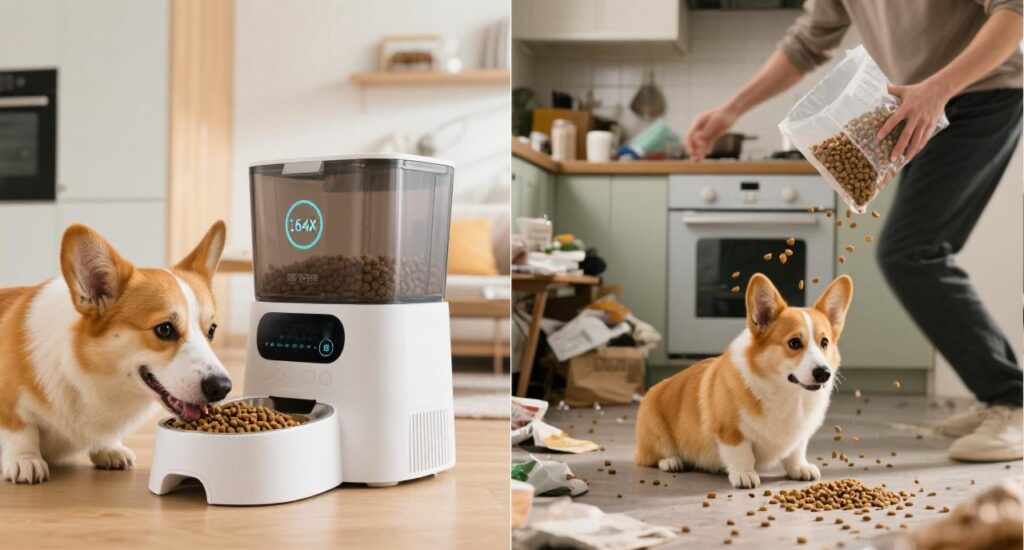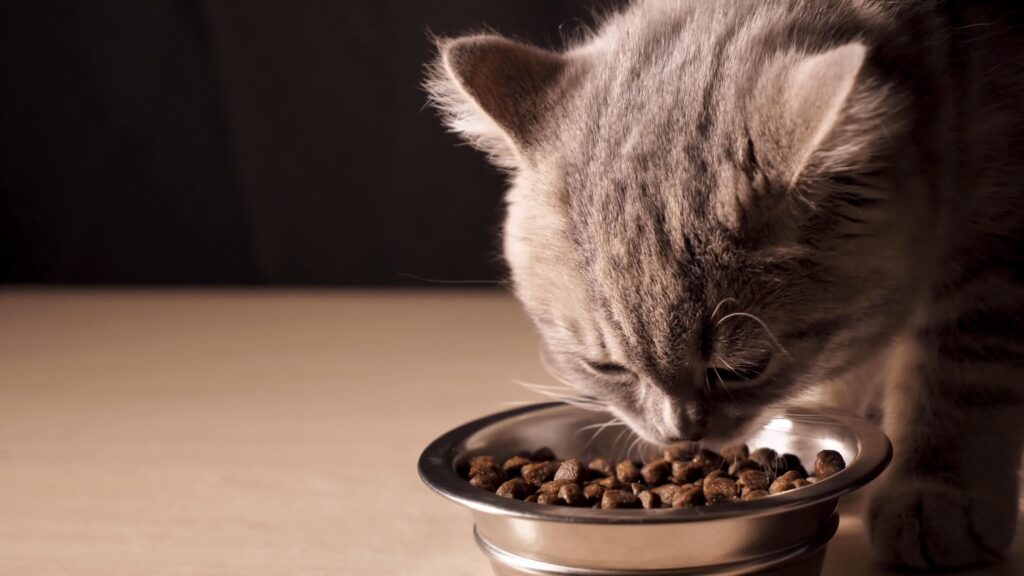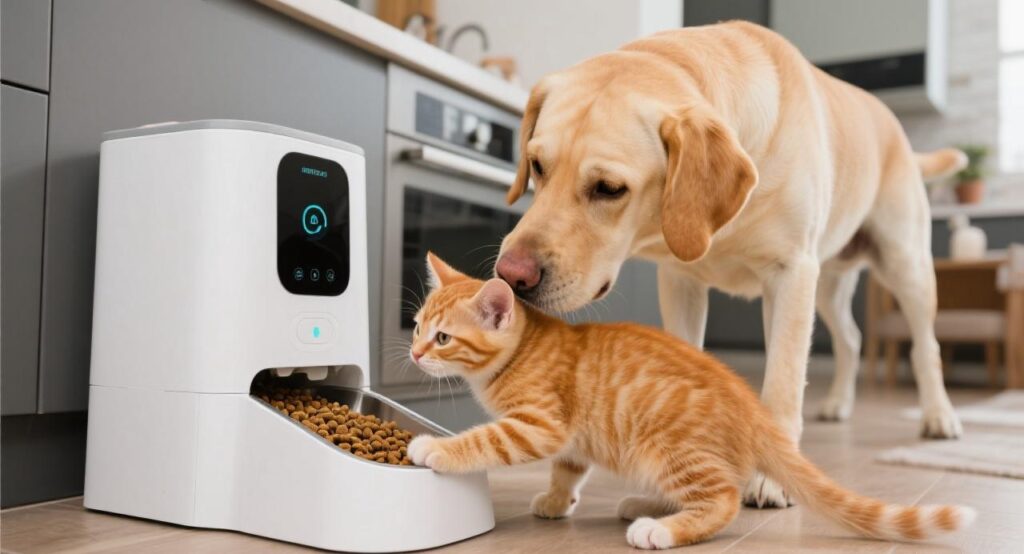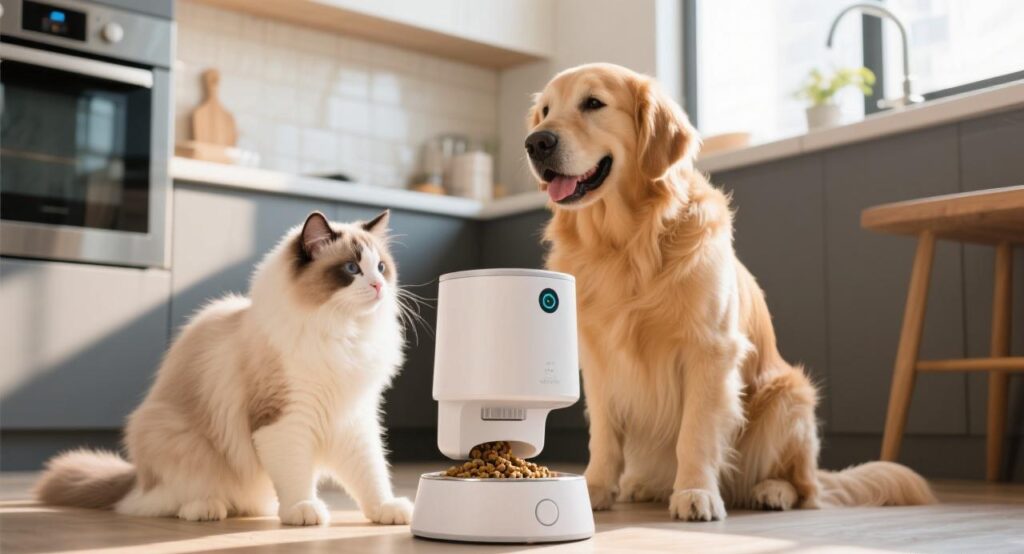Introduction: Modern Pets Trapped by Irregular Feeding
In bustling urban settings, our beloved pets often fall victim to the unpredictable chaos of human schedules. Imagine coming home past midnight, only to find your furry friend suffering due to missed meals or accidental overfeeding. Indeed, 57% of pet owners report a feeding time difference greater than two hours daily. This inconsistency creates a whirlwind of dietary chaos—portion sizes are often guessed, leading to up to a 40% error in visual estimation. Moreover, these irregular feeding patterns can lead to serious health issues, with 83% of digestive problems attributed to such schedules. Enter smart feeders—pioneers in precision feeding that promise not just the health and well-being of pets but also the ease of their loving owners.
Scientific Value of Scheduled Feeding

As hectic schedules dominate our modern lives, achieving balance and order seems elusive not just for us but also for our furry companions. Scheduled precision feeding offers more than mere convenience—it is scientifically proven to align with your pet’s physiological and psychological well-being, ensuring a harmonious lifestyle that benefits both pets and their owners.
Physiological Health Benefits
Scheduled feeding with precision smart feeders offers significant physiological health perks for our pets. At the core of these benefits is the stabilization of blood glucose levels. For instance, consistent feeding intervals have been shown to reduce the risk of diabetes in pets by 37%! This regularity is pivotal in avoiding drastic spikes and drops in blood sugar, which can cause long-term health issues, particularly in middle-aged and older pets.
Furthermore, maintaining consistent feeding schedules enhances digestive health. Regular feeding fosters optimum enzyme secretion, which is critical in processing food efficiently. According to veterinary reports, consistent feeding routines can cut down incidents of vomiting and diarrhea by 52%! This is particularly important for pets with sensitive stomachs or those prone to digestive issues.
Behavioral Psychological Benefits
Precision feeding doesn’t only benefit pets physically—it also contributes significantly to their mental health. With synchronized feeding schedules, pets’ biological clocks are better aligned, which in turn helps reduce separation anxiety, a common problem for many pets. Studies have demonstrated a 41% reduction in behaviors like over-grooming, which can often be anxiety-induced.
For multi-pet households, the harmony that comes with these smart feeders is truly remarkable. By utilizing RFID technology, each pet is recognized and fed accordingly, preventing the common issue of food competition and associated aggression. It’s a relief to know that nerfing the feeding frenzy also promotes peace among your furry family members.
Technical Breakdown – Precision Feeding Mechanism
Unpacking the mechanics behind precision feeding can be a thrilling journey into the world of technology. Modern smart feeders bring together advanced components designed with care to revolutionize how we approach pet feeding.
Key Component Specifications
The high-tech nexus of smart feeders is a well-thought-out concoction of different elements:
– Time Control: Core to the precision is the temperature-compensated crystal oscillator, boasting a minuscule error margin of less than 30 seconds per month. This keeps feeding times steadfast and reliable.
– Dispensing Mechanism: The use of a stainless steel auger coupled with anti-clog blades ensures that even freeze-dried foods remain effective and easily dispensed. With breakage rates lower than 0.3%, durability meets precision.
– Feedback System: High-sensitivity load cells integrated with AI algorithms provide real-time tracking and adjustment. This monitoring keeps portion control spot-on with a discrepancy of just ±5g, which is quite impressive!
Core Technology
At the heart of precision feeding lies the interplay of smart technology. The feeder’s brain, the preset program, communicates with both the time control chip and the weight sensor. This connection is further linked to a stepper motor that drives an auger screw, which dispenses food with an impressive accuracy deviation of only ±1.2g. These components work seamlessly, aided by real-time feedback adjustment, ensuring faultless delivery of meals that are both timely and correctly portioned.
Power Backup
Reliability is paramount. Smart feeders come equipped with robust power backup solutions to ensure that even during outages, pets don’t miss their meals. Devices typically feature a 5000mAh Li-ion battery coupled with a physical emergency switch. These configurations afford the feeder a power endurance of up to 120 hours. This means peace of mind for pet owners for up to five days, knowing their furry friends’ feeding schedule remains unaffected.
| Module | Core Technology | Precision/Reliability |
| Time Control | Temperature-Compensated Crystal Oscillator | <30 sec/month error |
| Dispensing Mech | Stainless Steel Auger + Anti-Clog Blades | Freeze-dried breakage <0.3% |
| Feedback System | High-Sensitivity Load Cell + AI Algorithm | Residual food monitoring ±5g |
| Power Backup | 5000mAh Li-ion + Physical Emergency Switch | 120hr outage endurance |
In sum, smart feeders bring together the latest in pet technology to not only fit snugly into our fast-paced lives but to improve them. Be it the physiological health benefits, the psychological reassurance for your pets, or the technological wizardry that ensures accuracy and dependability—scheduled precision feeding truly stands as a silent revolution in pet care. By embracing these innovations, you give your pet the gift of stability and enhance your own freedom, reshaping the pet-owner experience for the better.
Controlled Experiment – Smart Feeder vs. Manual Feeding

In the quest to improve our pets’ health and make our lives as pet owners a bit easier, many of us have eyed smart feeders as a potential solution. But how effective are they really? To answer this, let’s delve into a controlled experiment that compares the impact of smart feeders versus traditional manual feeding.
Blind Test Results
This experiment was all about observing the differences when pets were fed using smart feeders as opposed to the traditional manual method. For six months, pets were split into two groups, each monitored without knowing how their feeding was managed — hence, a blind test.
| Metric | Smart Feeder Group | Manual Feeding Group | Improvement/Reduction Rate |
| Feeding Time Deviation | ≤3 mins | 15-120 mins | ↑97% Accuracy |
| Obesity Incidence | 8% | 34% | ↓76% |
| Owner Anxiety Index (0-100) | 18 (Low) | 67 (High) | ↓73% |
| Annual Medical Cost (CNY) | $624 | $1,385 | ↓55% |
Smart Feeder Group:
– Feeding Time Deviation: Less than or equal to 3 minutes
– Obesity Incidence: 8%
– Owner Anxiety Index: 18 (classified as Low)
– Annual Medical Costs: $624
Manual Feeding Group:
– Feeding Time Deviation: 15 to 120 minutes
– Obesity Incidence: 34%
– Owner Anxiety Index: 67 (classified as High)
– Annual Medical Costs: $1,385
Clearly, the smart feeder group showed impressive consistency with feeding schedules, leading to better overall pet health and lower costs for their owners.
Improvement/Reduction Rate
The results were quite striking:
– Feeding Time Accuracy: The smart feeder group exhibited a 97% improvement in feeding time accuracy. This precision helps in maintaining stable blood glucose levels in pets, reducing the risk of diabetes.
– Obesity Rates: Pets in the smart feeder group had a 76% lower obesity incidence. Precision in portion control contributes significantly to maintaining a healthy weight.
– Owner Anxiety: The experiment indicated a 73% reduction in owner anxiety for those using smart feeders. Knowing that pets are fed on time, even when you’re caught up in meetings, brings peace of mind.
– Healthcare Costs: Surprisingly, pet owners using smart feeders spent 55% less on annual medical bills, likely due to reduced dietary-related health issues.
With such compelling data, it’s easy to see why smart feeders are becoming an indispensable part of many pet owners’ lives.
Scenario-Based Solutions
Now, let’s take a look at how smart feeders can address specific pet care scenarios for different kinds of households.
For Office Workers
Imagine your pet gets hungry at 3 PM, but you’re not off work until 5 PM. That’s where Wi-Fi-enabled smart feeders with built-in cameras come into play, like the PETKIT ULTRA. They allow you to remotely monitor how much your pet is eating and if they’re receiving their meals accurately. Moreover, you can receive alerts if your pet refuses to eat, letting you know if something’s up even when you’re not there. This technology ensures that your pet’s mealtimes are just as consistent as your daily coffee break.
Multi-Pet Households
Having multiple pets adds layers of complexity to feeding time. You might have different dietary needs or pets who are prone to stealing food meant for others. Smart feeders with dual-chamber systems, like those from Petlibro, offer independent feeding control for each pet, allowing you to program specific portions ensuring everyone gets the right amount. Imagine the peace in your home when mealtime no longer stirs up a frenzy of food competition!
Anxiety-Prone Pets
For pets that experience high levels of stress or anxiety, meal times can be an unsettling experience. Smart feeders with silent motors (producing noise levels ≤25dB) reduce stress-inducing noise. Some even come with voice recording capabilities, allowing you to play a comforting message from you. This feature can significantly help in calming your pet, making them feel as if you’re right there with them during their mealtime.
Through these solutions, smart feeders significantly enhance the quality of pet care while simultaneously offering owners incredible freedom and peace of mind in their busy lives. Whether you’re tackling a demanding work schedule, balancing the needs of multiple pets, or comforting an anxious furry friend, smart feeders are showing their value as a key component of modern pet technology. They don’t just provide food; they deliver precision, health, and, ultimately, love in a way that respects both pet and owner needs.
Pitfall Avoidance Guide

Congratulations on considering smart feeders for your pets! As with all technology, there’s a learning curve, but armed with the right knowledge, you can dodge potential snags and truly reap the benefits of precision feeding.
Moisture Control
One of the biggest risks with automated feeders is moisture. Damp environments can lead to food spoilage, which can be harmful to your pet’s health. To prevent this, it’s essential to use food-grade desiccants like regenerative silica gel inside the feeder. These desiccants help absorb moisture and keep your pet’s food dry and fresh, ensuring it stays safe for consumption.
Cleaning Protocol
Regular cleaning is crucial to maintain your smart feeder’s performance and keep it hygienic. Aim to wipe down the auger screw—a crucial component in dispensing precise portions—at least once a week with a food-safe alcohol wipe. This helps prevent the growth of aflatoxin mold, which can be dangerous for pets if consumed. A consistent cleaning schedule ensures your feeder operates smoothly and safely.
Failure Prediction
Although smart feeders are highly reliable, wear and tear can occur over time. If you notice more than a 10% fluctuation in portion sizes, it’s time to inspect the motor gears. Consistent portion inaccuracies can be a sign of a malfunctioning component, and early detection can prevent bigger issues down the line. Regular checks will keep your feeder in top condition and ensure your pet gets accurate meal sizes every time.
Avoiding Over-Dispensing
It’s easy to get a little overzealous with portion sizes, especially if you’re worried about your pet’s nutritional needs. However, overfeeding can lead to obesity and other health problems. Regularly monitor your pet’s weight and adjust meal portions as necessary. Your feeder may have a built-in system to track consumption and weight gain, so be sure to use these smart features to your advantage.
Backup Plans for Power Failures
What happens when the power goes out? No one wants their pet to miss a meal due to technical mishaps. Thankfully, most modern smart feeders come with a power backup system. For instance, many include a 5000mAh Li-ion battery that can endure a 120-hour outage. However, always have a manual feeding option on hand for peace of mind during long outages.
User Manual Literacy
Finally, one of the simplest pieces of advice: thoroughly read and understand your device’s user manual. This may seem like a no-brainer, but with various models and features, knowing your specific device’s ins and outs can prevent mishaps. Familiarize yourself with troubleshooting tips and ensure your Wi-Fi settings are correctly configured for those moments when remote access is necessary.
While smart feeders are a revolution in pet care, ensuring you avoid these pitfalls can maximize their effectiveness and enhance both your pet’s health and your lifestyle. After all, moving towards a tech-augmented pet care routine is not just about convenience—it’s about conscientious companionship.
Conclusion: Transforming Pet Care with Smart Feeders
The world of pet care is evolving, and smart feeders are leading the charge in transforming both pet health and owner freedom. By automating scheduled precision feeding, these devices help maintain your beloved pet’s health with pinpoint accuracy. They stabilize blood glucose levels and improve digestion by reducing the risk of irregular eating patterns. Furthermore, they tackle behavioral issues such as anxiety and stress by fostering a predictable environment.
Smart feeders offer owners unprecedented convenience, eliminating the daily grind of manual feeding schedules. They allow you to control and monitor feeding times from anywhere, using models equipped with Wi-Fi and cameras. These feeders also cater to specifics like multi-pet household needs with features like dual-chamber systems and RFID-enabled feeding.
The benefits extend beyond the obvious; smart feeders reduce owner anxiety and lower medical costs by preventing health issues. As technology continues to integrate into our lives, embracing tools like smart feeders can offer both you and your pet a healthier, stress-free routine. With precision feeding technology, caring for your pet has never been so accurate or stress-free. Let smart feeders be the silent partner in your pet’s healthy future.








